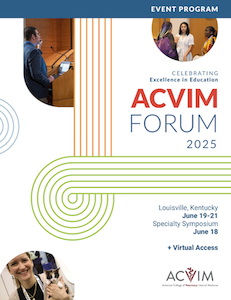Small Animal Internal Medicine
(ID19) Lungworm Species Typing Using Molecular Diagnostics in an International Sample Cohort
Thursday, June 19, 2025
6:45 PM - 7:00 PM ET
Location: Exhibit Hall Poster Park - Kiosk 1

Pablo Jimenez Castro, DVM, PhD, DACVM (Parasitology) (he/him/his)
Director of Parasitology
Antech Diagnostics
Athens, GA, United States
Research Abstract - ePoster Presenter(s)
Abstract:
Background: Infection with lungworm species may cause clinical disease in dogs and cats. As an example, Angiostrongylus vasorum is endemic in Europe, Africa, and South America, and has been reported in Canada and the United States (US). Molecular diagnostics allow the detection, and typing, of lungworm species which are difficult to identify by conventional microscopy.
Objectives: To validate a 7-species lungworm molecular diagnostics panel for dogs and cats and inform geographic distribution. Animals: A total of 387 microscopically identified samples from different animals from Italy and Greece were included to determine the clinical performance of the 7-species molecular lungworm panel. A cohort of 5,765 canine and feline fecal samples submitted for conventional zinc-sulfate centrifugation or molecular qPCR testing from the US and Canada were tested to identify lungworms.
Methods: Total nucleic acid extracts were analyzed using hydrolysis probe-based real-time PCR (qPCR) tests for 7 lungworm species and one internal sample control. Canine lungworm species included A. vasorum, Oslerus osleri/Filaroides hirthi, and Crenosoma vulpis. Feline lungworm species included A. chabaudi, Aelurostrongylus abstrusus, O. rostratus, and Troglostrongylus brevior. Discrepant results were confirmed using next generation sequencing methods.
Results: When compared to the Baermann test, ZCF, and morphologically identified specimens, the PPA and NPA values were 74% (0.58–0.86) and 99% (0.96–1), 89% (0.79–0.96) and 95% (0.89–0.98), and 100% (0.74–1) and 100% (0.59–1), respectively. Sixty sequence-confirmed cases were detected in Canada and the US (Figure).
Conclusions: Molecular methods for the detection, and differentiation, of lungworm species of global concern provide efficient and affordable alternatives to conventional identification methods. Accurate identification of lungworm species supports timely clinical management, reduces unnecessary treatments, and mitigates risks associated with misdiagnosis or spurious parasitism.
Background: Infection with lungworm species may cause clinical disease in dogs and cats. As an example, Angiostrongylus vasorum is endemic in Europe, Africa, and South America, and has been reported in Canada and the United States (US). Molecular diagnostics allow the detection, and typing, of lungworm species which are difficult to identify by conventional microscopy.
Objectives: To validate a 7-species lungworm molecular diagnostics panel for dogs and cats and inform geographic distribution. Animals: A total of 387 microscopically identified samples from different animals from Italy and Greece were included to determine the clinical performance of the 7-species molecular lungworm panel. A cohort of 5,765 canine and feline fecal samples submitted for conventional zinc-sulfate centrifugation or molecular qPCR testing from the US and Canada were tested to identify lungworms.
Methods: Total nucleic acid extracts were analyzed using hydrolysis probe-based real-time PCR (qPCR) tests for 7 lungworm species and one internal sample control. Canine lungworm species included A. vasorum, Oslerus osleri/Filaroides hirthi, and Crenosoma vulpis. Feline lungworm species included A. chabaudi, Aelurostrongylus abstrusus, O. rostratus, and Troglostrongylus brevior. Discrepant results were confirmed using next generation sequencing methods.
Results: When compared to the Baermann test, ZCF, and morphologically identified specimens, the PPA and NPA values were 74% (0.58–0.86) and 99% (0.96–1), 89% (0.79–0.96) and 95% (0.89–0.98), and 100% (0.74–1) and 100% (0.59–1), respectively. Sixty sequence-confirmed cases were detected in Canada and the US (Figure).
Conclusions: Molecular methods for the detection, and differentiation, of lungworm species of global concern provide efficient and affordable alternatives to conventional identification methods. Accurate identification of lungworm species supports timely clinical management, reduces unnecessary treatments, and mitigates risks associated with misdiagnosis or spurious parasitism.


